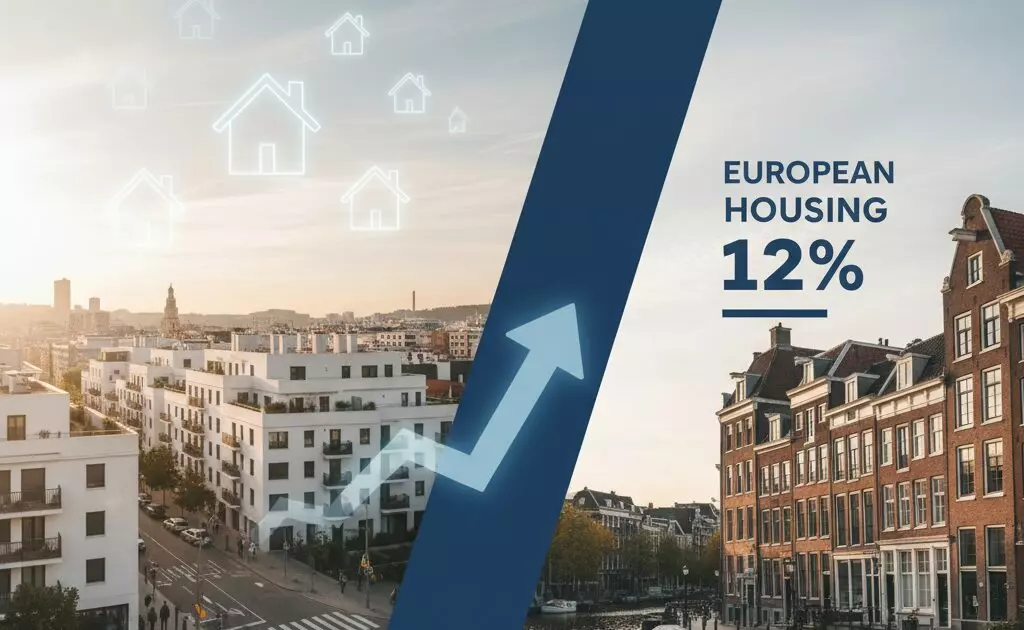European property markets have experienced unprecedented growth in 2025, with house prices surging by an average of 12% across the continent. This remarkable increase represents one of the most significant annual price movements in recent European housing history, affecting both buyers and sellers throughout the region. The surge has been driven by a complex mix of economic recovery, demographic shifts, and evolving housing preferences that emerged from post-pandemic lifestyle changes.
Get one year Free Listings!
Subscribe to our newsletter and enjoy a 50% discount on all listing packages, no strings attached!

The dramatic price increases have varied significantly across different European nations, creating a diverse landscape of opportunities and challenges for property stakeholders. From the bustling urban centers of Western Europe to the emerging markets of Eastern European countries, the 12% average masks substantial regional variations that tell a more nuanced story of continental housing dynamics.
Which EU Countries Lead Property Price Surge?
Portugal has emerged as the clear frontrunner in European property price increases, recording a staggering 18.7% year-on-year growth in 2025. This exceptional performance has been fueled by continued international investment, particularly from digital nomads and remote workers seeking favorable tax conditions and Mediterranean lifestyle benefits. The Portuguese government’s Golden Visa program modifications and new resident tax incentives have maintained strong foreign buyer interest despite global economic uncertainties.
Following Portugal’s lead, several Eastern European nations have posted impressive double-digit gains that reflect their growing economic stability and EU integration benefits. Poland recorded 16.2% growth, driven by Warsaw and Krakow’s tech sector expansion, while Hungary achieved 15.8% increases centered around Budapest’s booming financial services industry. These markets have attracted both domestic upgraders and international investors seeking higher yields than those available in Western European capitals.
Regional Breakdown: Where Prices Rose Most
Western European markets have shown more moderate but still substantial growth patterns, with Germany posting 11.4% increases and France recording 10.9% gains during 2025. German price growth has been particularly pronounced in secondary cities like Munich, Hamburg, and Frankfurt, where corporate relocations and infrastructure investments have created sustained housing demand. The German market’s stability continues to attract long-term investors seeking steady appreciation rather than speculative gains.
Mediterranean markets have experienced mixed results, with Spain achieving 13.2% growth while Italy recorded more modest 8.7% increases. Spanish coastal regions, particularly the Costa del Sol and Valencia areas, have benefited from renewed tourism recovery and permanent relocations from Northern European buyers seeking warmer climates. Italian markets have been more restrained, with northern industrial cities like Milan and Turin showing stronger performance than southern regions, reflecting ongoing economic disparities within the country.
Economic Factors Behind 2025 Housing Boom
The European Central Bank’s monetary policy decisions have played a crucial role in sustaining property market momentum throughout 2025. Interest rates have remained relatively accommodative despite inflation concerns, allowing buyers to access mortgage financing at historically reasonable terms. This monetary environment has supported both first-time buyers and property investors, contributing significantly to the sustained demand that has driven price increases across the continent.
Supply constraints have emerged as perhaps the most critical factor behind the 12% average price surge. Construction delays, labor shortages, and rising material costs have limited new housing supply precisely when demand has reached multi-year highs. Urban planning restrictions in major cities, combined with lengthy permitting processes, have exacerbated these supply-demand imbalances. Additionally, the growing trend toward sustainable and energy-efficient housing has increased construction costs, further limiting affordable new supply entering European markets.
Market Outlook: What’s Next for EU Property?
Looking ahead to late 2025 and early 2026, European property markets are expected to experience more moderate growth as current price levels begin to impact affordability for average buyers. Economic forecasters predict that the exceptional 12% growth rate will likely moderate to single-digit increases as central banks potentially adjust monetary policies and supply chain issues gradually resolve. However, fundamental demand drivers including population growth in major cities and continued remote work flexibility suggest that European property markets will remain resilient.
Regional variations are expected to persist, with Eastern European markets potentially maintaining stronger growth trajectories than their Western counterparts. Countries like Poland, Czech Republic, and Hungary may continue benefiting from EU structural funds, corporate investments, and lifestyle migration from higher-cost Western European nations. Meanwhile, established markets in Germany, France, and the Netherlands are likely to see more sustainable, moderate appreciation rates that better align with local income growth and economic fundamentals.
The 12% European house price surge in 2025 represents a watershed moment for continental property markets, reflecting both robust economic recovery and structural changes in housing demand patterns. While these increases have created wealth for existing property owners, they have also raised important questions about housing affordability and market accessibility for younger generations. As European policymakers grapple with balancing economic growth against social housing needs, the coming months will be crucial in determining whether current price trends represent sustainable market evolution or require intervention to ensure long-term housing market stability across the continent.





Join The Discussion